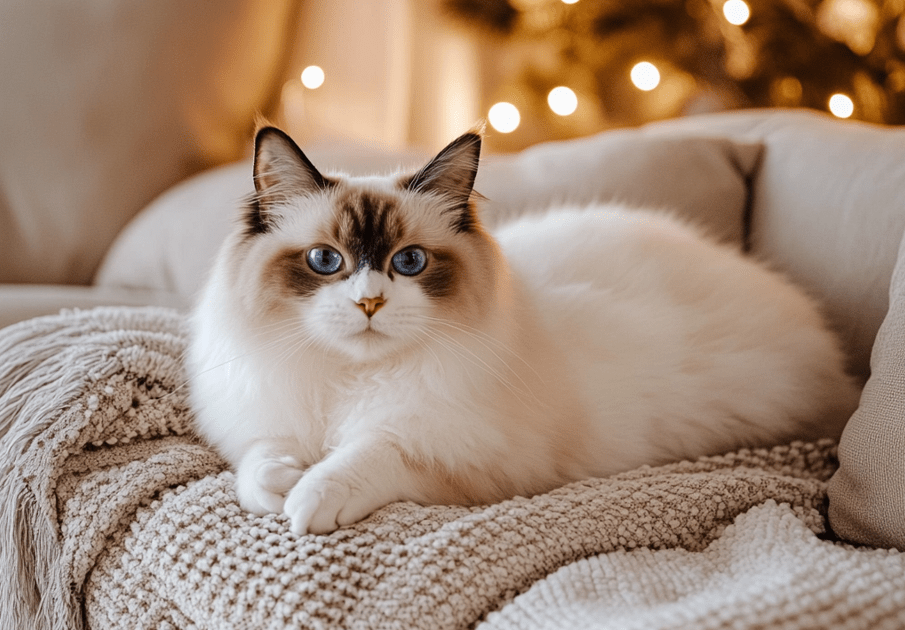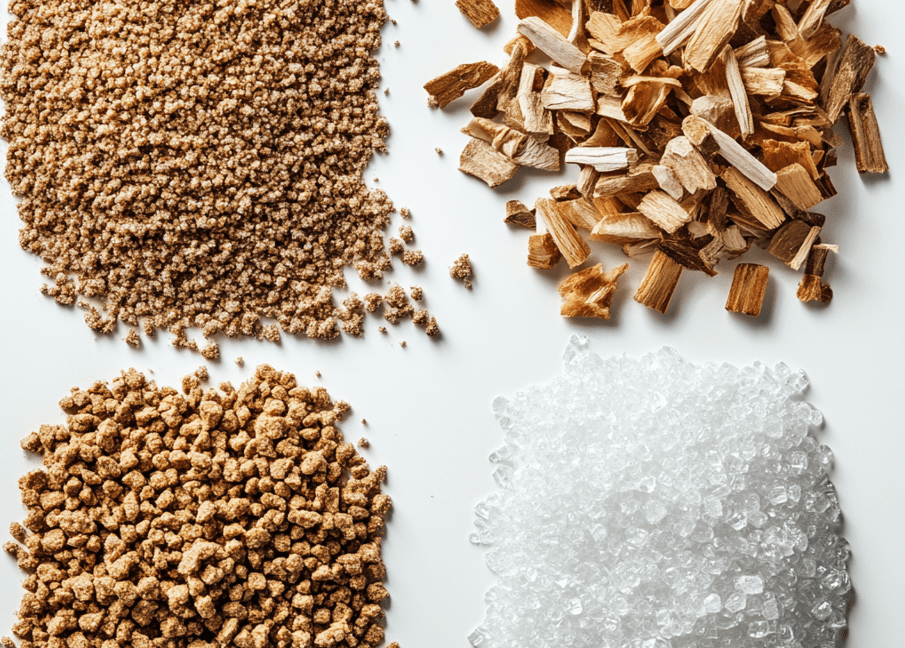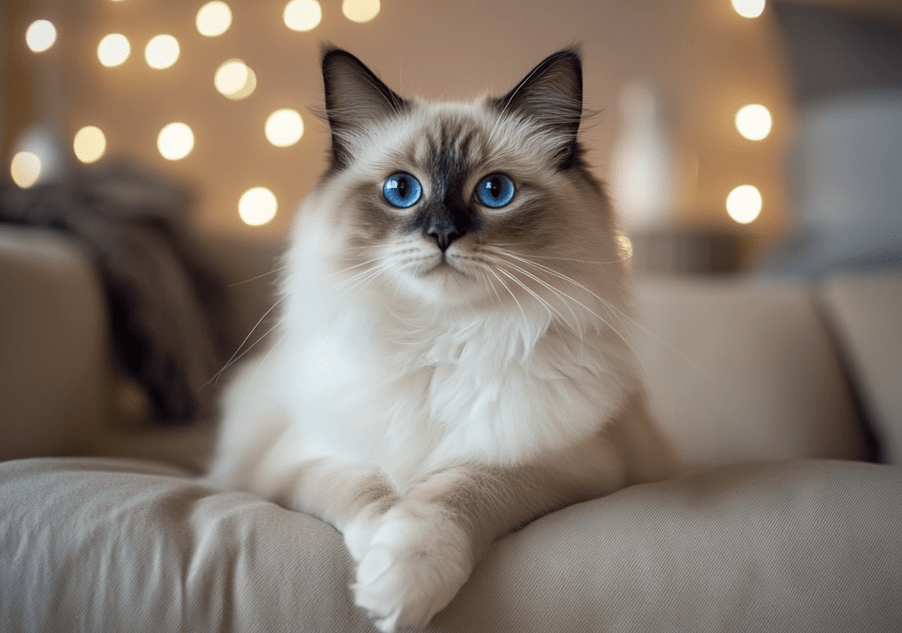
Managing your Ragdoll cat’s weight is essential for ensuring their long-term health and happiness, but it doesn’t mean you have to eliminate their favorite treats entirely. Ragdolls, with their affectionate nature and luxurious coats, are prone to weight gain due to their relaxed demeanor and love for lounging. This comprehensive guide will show you how to manage your Ragdoll cat’s weight effectively while still incorporating treats, offering practical, vet-approved strategies to keep your feline friend healthy and content.
Understanding the Ragdoll Breed and Weight Concerns
Ragdolls are a large, gentle breed known for their docile temperament, striking blue eyes, and plush, semi-long coats. Their laid-back nature, while endearing, can contribute to weight gain, especially if their diet and activity levels aren’t carefully monitored. Obesity in Ragdolls can lead to serious health issues, including diabetes, arthritis, and heart disease, making weight management a critical aspect of their care.
Key characteristics of Ragdolls that impact weight:
Low Activity Levels: Ragdolls are less energetic than breeds like Bengals, preferring to lounge rather than engage in vigorous play.
Large Appetite: Many Ragdolls enjoy food and may overeat if portions aren’t controlled.
Slow Metabolism: Their relaxed lifestyle can result in a slower metabolism, making weight gain easier.
Understanding these traits helps you tailor a weight management plan that suits your Ragdoll’s unique needs while allowing them to enjoy treats in moderation.
Why Weight Management Matters
Maintaining a healthy weight is crucial for your Ragdoll’s quality of life. Excess weight can strain their joints, exacerbate mobility issues, and shorten their lifespan. However, completely removing treats from their diet can lead to stress or behavioral changes, as Ragdolls often associate treats with affection and bonding. A balanced approach to weight management ensures your cat stays healthy without feeling deprived.
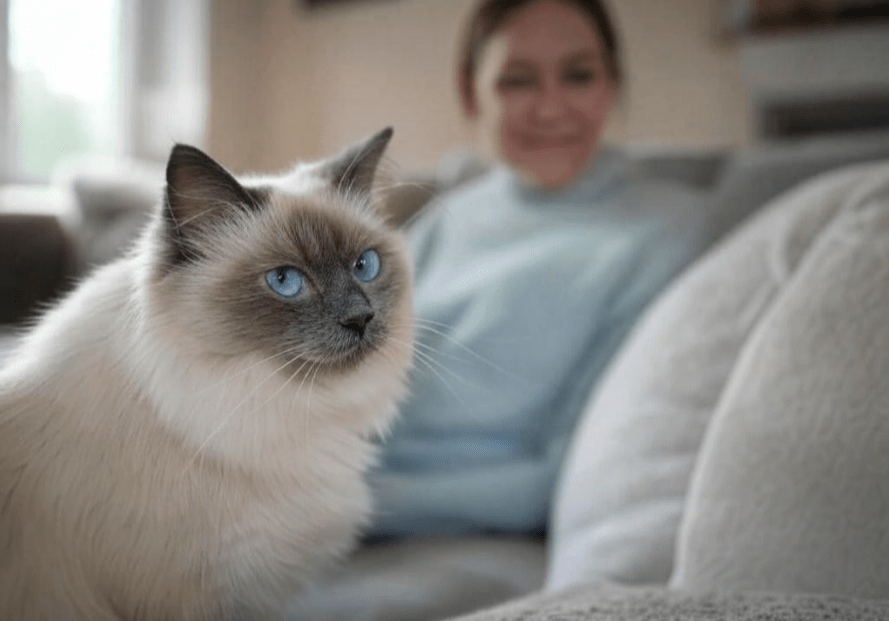
Benefits of effective weight management include:
Improved Mobility: A healthy weight reduces stress on joints, keeping your Ragdoll agile.
Enhanced Longevity: Proper weight control can add years to your cat’s life.
Better Mood: A fit Ragdoll is more likely to be playful and engaged.
Prevention of Health Issues: Avoiding obesity lowers the risk of chronic conditions.
Assessing Your Ragdoll’s Weight
Before starting a weight management plan, determine if your Ragdoll is overweight. Here’s how to assess their weight:
1. Body Condition Score (BCS)
The BCS is a vet-recommended tool to evaluate your cat’s weight. On a 9-point scale:
4–5: Ideal weight (ribs can be felt with slight fat cover, visible waistline).
6–7: Overweight (ribs harder to feel, less defined waist).
8–9: Obese (ribs not easily felt, no waistline, rounded abdomen).
Check your Ragdoll’s BCS at home or consult your veterinarian for an accurate assessment.
2. Visual and Physical Checks
Ribs: You should feel the ribs with gentle pressure but not see them.
Waistline: From above, your cat should have a slight hourglass shape.
Abdomen: A tucked-up abdomen (not sagging) indicates a healthy weight.
3. Veterinary Evaluation
A vet can provide a precise weight assessment, recommend a target weight, and rule out medical conditions (e.g., hypothyroidism) that may contribute to weight gain. They can also calculate your Ragdoll’s daily caloric needs based on their age, size, and activity level.
Creating a Weight Management Plan
To manage your Ragdoll cat’s weight without sacrificing treats, focus on a combination of controlled feeding, increased activity, and smart treat choices. Below is a step-by-step plan to achieve a healthy weight while keeping your cat happy.
Step 1: Optimize Their Diet
A balanced diet is the cornerstone of weight management. Follow these guidelines to ensure your Ragdoll gets the right nutrition:
Choose High-Quality Food
Select a cat food formulated for weight control or maintenance, with:
High Protein: Supports muscle maintenance and satiety.
Low Carbohydrates: Reduces excess calorie intake.
Moderate Fat: Provides energy without contributing to weight gain.
Look for foods labeled “complete and balanced” by the Association of American Feed Control Officials (AAFCO). Wet food is often a better choice for Ragdolls, as it’s lower in calories per volume and helps with hydration.
Control Portions
Overfeeding is a common cause of weight gain in Ragdolls. To manage portions:
Measure Food: Use a measuring cup or scale to provide exact portions based on the food’s calorie content and your vet’s recommendations.
Follow Feeding Guidelines: Adjust portions according to your cat’s target weight, not their current weight.
Split Meals: Feed 3–4 smaller meals daily to prevent overeating and stabilize metabolism.
Incorporate Weight-Loss Formulas
If your Ragdoll is significantly overweight, consider a veterinary-prescribed weight-loss diet. These foods are lower in calories but nutrient-dense, ensuring your cat feels satisfied while losing weight.
Step 2: Incorporate Treats Strategically
Treats are an important part of your Ragdoll’s routine, but they must be managed carefully to avoid sabotaging weight goals.
Choose Low-Calorie Treats
Opt for treats that are:
Low in Calories: Look for treats with 1–2 calories each.
High in Protein: Protein-rich treats (e.g., freeze-dried chicken or fish) are more satisfying.
Grain-Free: Avoid fillers that add unnecessary calories.
Examples include freeze-dried meat treats, dental treats designed for weight control, or small pieces of cooked, unseasoned chicken.
Limit Treat Quantities
Set a Daily Treat Calorie Limit: Treats should account for no more than 10% of your Ragdoll’s daily calories. For a 10-pound cat needing 200 calories daily, this means 20 calories from treats (about 10–15 small treats).
Use Treats as Rewards: Reserve treats for training, play, or bonding moments to make them meaningful.
Subtract Treat Calories: Reduce the amount of regular food to account for treat calories, maintaining the total daily intake.
Make Treats Interactive
Turn treat time into an activity to burn calories:
Puzzle Feeders: Place treats in puzzle toys to encourage mental and physical stimulation.
Hide-and-Seek: Hide treats around the house for your Ragdoll to find, promoting exploration.
Training: Use treats to teach tricks like “sit” or “high-five,” combining mental exercise with reward.
Step 3: Increase Physical Activity
Ragdolls may not be as naturally active as other breeds, but regular exercise is crucial for weight management. Aim for 20–30 minutes of activity daily, split into short sessions to suit their relaxed nature.
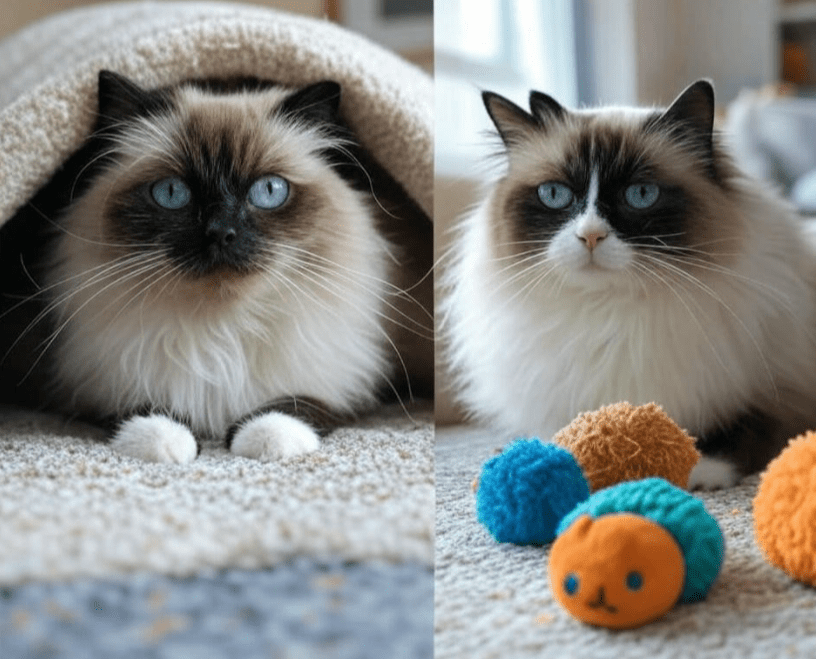
Interactive Play
Engage your Ragdoll with toys that mimic prey-like movements:
Wand Toys: Feather wands or string toys encourage chasing and pouncing.
Laser Pointers: Stimulate hunting instincts, but end with a physical toy to satisfy their prey drive.
Balls or Mice: Lightweight toys that roll or bounce can spark interest.
Play with your cat 2–3 times daily, gradually increasing the intensity as they become more active.
Environmental Enrichment
Create an environment that encourages movement:
Cat Trees: Provide vertical spaces for climbing and jumping.
Tunnels: Tunnels or cardboard boxes inspire exploration.
Window Perches: Place perches near windows to encourage your Ragdoll to move and observe outdoor activity.
Food-Driven Exercise
Use food to motivate activity:
Food Puzzles: Place kibble or treats in puzzle feeders to make your cat “work” for their meal.
Scatter Feeding: Sprinkle kibble across the floor to encourage foraging.
Treat Toss: Gently toss treats for your Ragdoll to chase, turning treat time into exercise.
Step 4: Monitor Progress
Regular monitoring ensures your weight management plan is effective and allows for adjustments as needed.
Weigh Your Cat
Weekly Weigh-Ins: Use a pet scale or weigh yourself holding your cat, then subtract your weight. Aim for a gradual loss of 0.5–1% of body weight per week (e.g., 0.05–0.1 pounds for a 10-pound cat).
Log Progress: Keep a journal of your cat’s weight, food intake, and activity levels to track trends.
Observe Behavior
Watch for signs of improved health, such as:
-
Increased energy and playfulness.
-
Easier movement or jumping.
-
A more defined waistline.
If weight loss stalls or your cat seems lethargic, consult your vet to rule out underlying issues or adjust the plan.
Veterinary Check-Ins
Schedule vet visits every 3–6 months to assess your Ragdoll’s progress and ensure they’re losing weight safely. Your vet can also recommend supplements (e.g., omega-3 fatty acids) to support joint health during weight loss.
Common Challenges and Solutions
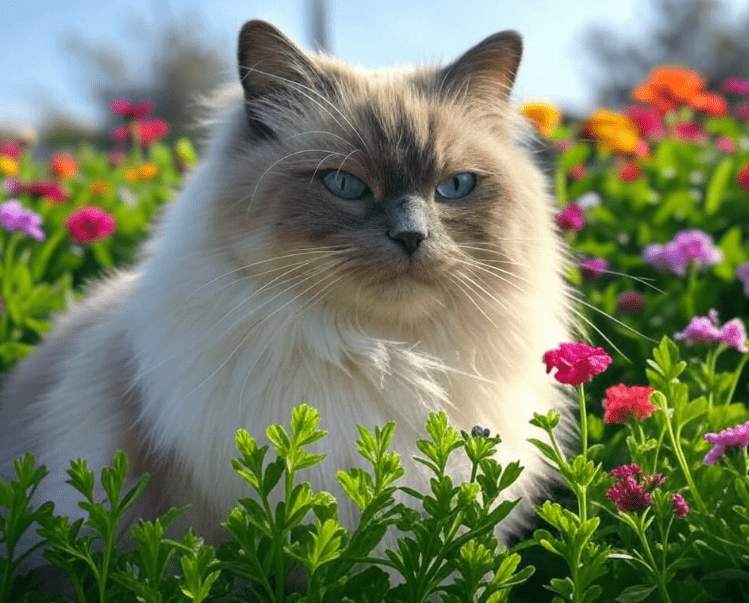
Weight management can come with challenges, especially for treat-loving Ragdolls. Here’s how to address common issues:
1. Begging for Treats
Ragdolls are masters at using their charm to beg for treats. To manage this:
Stick to a Schedule: Offer treats at set times to establish a routine.
Distract with Play: Redirect begging with a play session or puzzle toy.
Use Alternatives: Offer attention, grooming, or a small piece of their regular food as a “treat.”
2. Lack of Interest in Exercise
If your Ragdoll resists activity:
Experiment with Toys: Try different toys to find what excites them (e.g., crinkle balls, feather teasers).
Short Sessions: Start with 2–3 minute play sessions and gradually increase.
Incorporate Treats: Use low-calorie treats to reward participation in play.
3. Slow Weight Loss
If progress is slower than expected:
Recalculate Calories: Ensure you’re not overfeeding, including treats.
Increase Activity: Add an extra play session or more challenging enrichment.
Consult Your Vet: They may recommend a stricter diet or medical tests to rule out metabolic issues.
Special Considerations for Ragdolls
Ragdolls have unique needs that influence weight management:
Joint Health: Their large size puts extra strain on joints, so avoid high-impact activities that could cause injury.
Coat Care: Regular grooming prevents matting, which can be uncomfortable for overweight cats and discourage movement.
Stress Sensitivity: Ragdolls are sensitive to change, so introduce diet or exercise changes gradually to avoid stress.
The Role of Treats in Bonding
Treats play a significant role in the emotional bond between you and your Ragdoll. Rather than eliminating them, focus on making treats a healthy part of your relationship:
Quality Over Quantity: Choose nutrient-rich treats that align with weight goals.
Mindful Moments: Use treat time to strengthen your bond through play or training.
Variety: Rotate treat types to keep your Ragdoll engaged without increasing calorie intake.
Sample Weight Management Plan for a Ragdoll
Here’s a sample daily plan for a 12-pound Ragdoll aiming to reach 10 pounds:
Breakfast (7 AM): ¼ cup weight-control dry food (50 calories).
Morning Play (8 AM): 5-minute wand toy session.
Midday Meal (12 PM): ½ can wet food (100 calories).
Afternoon Enrichment (3 PM): Puzzle feeder with 5 pieces of kibble (10 calories).
Evening Play (6 PM): 10-minute laser pointer and treat toss (5 low-calorie treats, 10 calories).
Dinner (8 PM): ¼ cup weight-control dry food (50 calories).
Total Calories: 220 calories (adjusted for weight loss).
Weekly Weigh-In: Track weight every Sunday morning.
Adjust this plan based on your vet’s recommendations and your cat’s progress.
Benefits of Healthy Weight Management
Successfully managing your Ragdoll’s weight offers numerous benefits:
Enhanced Vitality: A fit Ragdoll is more playful and engaged.
Reduced Health Risks: Lower chances of obesity-related diseases.
Stronger Bond: Shared activities like play and training deepen your connection.
Longer Life: A healthy weight can extend your Ragdoll’s lifespan.
Conclusion
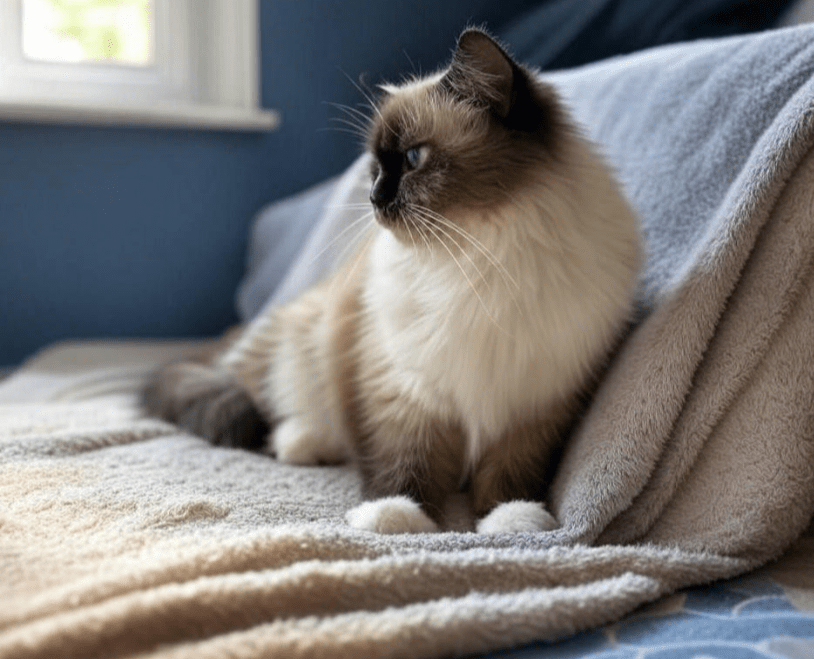
Managing your Ragdoll cat’s weight without sacrificing treats is entirely achievable with a thoughtful, balanced approach. By optimizing their diet, incorporating low-calorie treats, increasing activity, and monitoring progress, you can help your Ragdoll achieve a healthy weight while keeping them happy and satisfied. This guide provides the tools and strategies to create a tailored weight management plan that suits your Ragdoll’s unique needs, ensuring they thrive for years to come. Start today, and enjoy the journey of nurturing a healthier, more vibrant feline companion.


